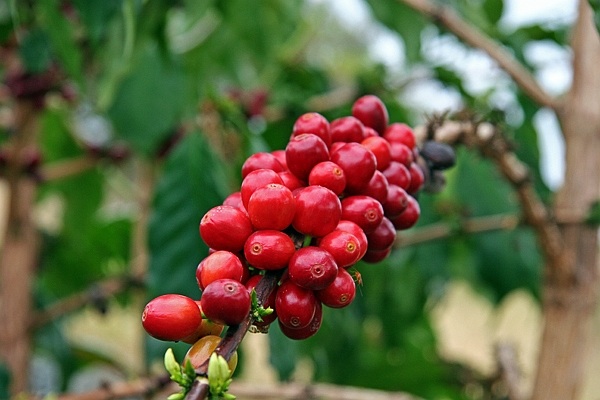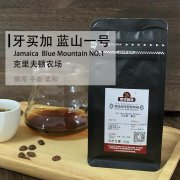Colombian coffee bean variety tin card like bean Castillo coffee bean history story and shape appearance
Colombia, which has been growing coffee since the early 1800s, now produces about 12% of the world's coffee, second only to Brazil and Vietnam. The varieties of coffee plants planted include the ancient Arabica varieties Ironka, bourbon, Kaddura, Maragogype,
Typica is found in every major coffee growing area in the world. This is because of its long history.

The history of Typica can be traced back to southwestern Ethiopia, just like other Arabica coffee. Arabica was brought to Yemen between the 15th and 16th centuries and to India in 1700. The seeds sent to the coast of Malabar, India, and Java, Indonesia, are now known as iron pickups.
The Bourbon breed followed a similar path to Yemen, Typica, but was transported further east, bringing seeds to the coast of Madagascar on the island of Bourbon (now Reunion). Like Typica, bourbon is an integral part of the genealogy of coffee varieties. It is still grown around the world.
The Castillo coffee variety was developed by the Columbia Coffee Institute CENICAFE in 2005 to prevent the spread of La Roya, a fungus that attacks the leaves of coffee trees. It is the cross fertilization between the hybrids of Caturra (male parent) and Timor (female parent), and its thick leaves enable it to withstand La Roya. It is a little taller than Caturras, with long branches, big leaves and big coffee beans. Castillo would be a little smaller than Manning, which is the most common coffee in a big family. is delicate and balanced; with a hint of caramel and orange blossom aromas, it is perfect for people who like "not too strong" coffee. Of course, people who don't like this kind of coffee should fall in love with Blue Mountain Coffee. Qianjie thinks that the most important feature of Blue Mountain Coffee is that it is so balanced that it is excellent in all aspects.

Maragogype is almost never produced in large quantities, making it one of the super rare types of coffee. Because of the size of coffee beans, few farmers dare to produce this delicacy, which gives it the nickname Elephant Coffee beans.
In general, Maragogypes brings floral aromas with citrus acidity and mild sweetness, much less than Rosa Coffee. Surprise coffee roasters and baristas. The plant developed as a result of a natural mutation in the Typica variety and was first found in the city of Maragogipe in the Bahia region of northeastern Brazil.
The size of these coffee beans means that trees need more space to grow and have less harvest than other coffee plants. The branches are at a wide angle from the trunk, with few secondary and tertiary branches, decorated with large flowers and slender coffee cherries.
Today, it is mainly produced in the province of Antioquia in northwest central Colombia. If you want to take a sip of the rarest coffee beans, they are all single-source coffee varieties.
Colombia is the main coffee supplier in the instant coffee market because of the large amount of coffee produced. As we all know, it produces a very smooth and versatile flavor, which can make a great cup of instant coffee.
Important Notice :
前街咖啡 FrontStreet Coffee has moved to new addredd:
FrontStreet Coffee Address: 315,Donghua East Road,GuangZhou
Tel:020 38364473
- Prev

Introduction of Colombian Organic Coffee Coffee beans from the earliest Santander region of Colombia have a special flavor and taste.
Because the tradition handed down from generation to generation is that Colombian organic coffee has become one of the best coffee in the world. The Rainforest Alliance we protect forests, protect biodiversity and ensure sustainable agricultural practices. 100% hand selection We carefully pick only ripe fruit (one by one) from the tree, as a good practice, not only can we get a good cup of coffee at the end
- Next

Blue Mountain Coffee VS Kona Coffee Flavor and Taste distinction Blue Mountain Coffee Story Kona Coffee Grade Classification
All coffee lovers or beginners must have heard of Blue Mountain Coffee and Kona Coffee. Growing coffee here is one of the most popular coffee beans in the world, and you may want to know the difference between them. First of all, let's take a look at each kind of coffee: blue Mountain Coffee, a popular beer, comes from coffee beans grown in the Blue Mountains of Jamaica. These Jamaicans.
Related
- Detailed explanation of Jadeite planting Land in Panamanian Jadeite Manor introduction to the grading system of Jadeite competitive bidding, Red bid, Green bid and Rose Summer
- Story of Coffee planting in Brenka region of Costa Rica Stonehenge Manor anaerobic heavy honey treatment of flavor mouth
- What's on the barrel of Blue Mountain Coffee beans?
- Can American coffee also pull flowers? How to use hot American style to pull out a good-looking pattern?
- Can you make a cold extract with coffee beans? What is the right proportion for cold-extracted coffee formula?
- Indonesian PWN Gold Mandrine Coffee Origin Features Flavor How to Chong? Mandolin coffee is American.
- A brief introduction to the flavor characteristics of Brazilian yellow bourbon coffee beans
- What is the effect of different water quality on the flavor of cold-extracted coffee? What kind of water is best for brewing coffee?
- Why do you think of Rose Summer whenever you mention Panamanian coffee?
- Introduction to the characteristics of authentic blue mountain coffee bean producing areas? What is the CIB Coffee Authority in Jamaica?

